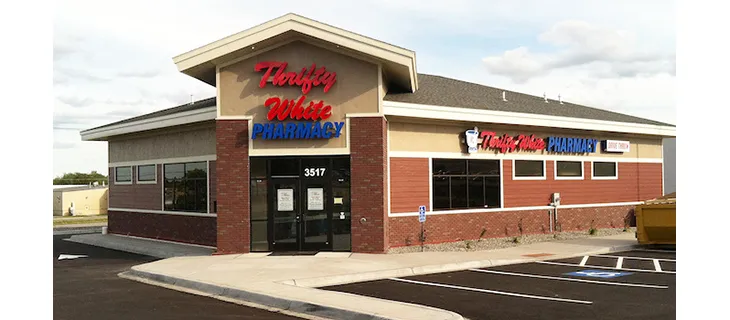Imagine C-3PO or R2-D2 delivering your medication to ensure you receive it on time. The pharmacy sector may not yet be Star Wars-ready, but today’s technology is making headway toward an AI, automated, robotic and more personalized future.

Deepak Borole
The global pharmacy automation market totaled $5.6 billion in 2022 and is expected to grow by 8.4 % CAGR (compound annual growth rate) through 2032, when the total market will reach $12.49 billion. The global pharmaceutical robot sector reached $211 million in 2022 and is projected to grow by a 6.7% CAGR and more than double by 2033.
Robots and automation
Robots and automation already play a significant role behind the scenes in medication management. By 2030, pharmacy automation is expected to double, freeing pharmacists to provide more personalized virtual and physical patient care. Pharmacies have already adopted automated medication dispensing systems and robots for sorting, counting, labeling and other repetitive tasks.
Walgreens and CVS, the two largest pharmacies in the country, have already adopted the latest technological innovations. Walgreens utilizes robot-powered micro-fulfillment centers in the U.S. to fill customers’ prescriptions. CNBC reports that by 2025, Walgreens may fill half of its prescriptions at the automated hubs. Similarly, CVS uses robots, automation, machine learning and AI to streamline and increase efficiencies in more than 9,000 stores.
The benefits of “smart” pharmacies are readily apparent. The technology increases speed, optimizes workflow and reduces human errors that are costly and potentially dangerous to patients.
AI takes the lead
AI is already playing an integral part in how pharmacies operate, and as AI becomes more advanced it will further contribute to “smart” pharmacies. AI platforms provide real-time analytics, enabling pharmacies to:
• Predict medication shortages.
• Streamline inventory management.
• Schedule patient follow-ups.
• Monitor patient adherence.
• Detect dangerous drug interactions.
Medication nonadherence is a serious health issue in the U.S., leading to nearly half of treatment failures, 125,000 deaths and 25% of hospital admissions annually. AI can benefit patients by providing customized communications that encourage better medication adherence through behavioral modification. In one recent instance, 90% of the patients achieved a medication adherence rate of 80% or higher with the aid of an AI-driven patient app.
Pharmacies are also increasing medication adherence by using smart wireless pill bottles that can send reminders to patients, family members and health care aides to ensure the medications are taken on time. When patients open the pill bottles, information is sent wirelessly to servers, which analyze the information in real-time and provide feedback to the appropriate people.
Furthermore, AI systems will free pharmacists to develop personalized medication regimen recommendations, because AI can analyze patients’ medical history to reduce the chances of adverse drug reactions and increase positive treatment outcomes.
Telepharmacy takes off
The pandemic accelerated the acceptance of telepharmacy just like it did for online shopping. While North Dakota pioneered telepharmacy in 2001 to operate in rural or remote areas without a pharmacist present, 22 states still have not embraced telepharmacy.
Technology like AI, machine learning, virtual reality and augmented reality enhance the benefits of telepharmacies. AI systems will enable more personalization of patient care, while predictive analytics will improve medication management. Pharmacies can use VR and AR for more enhanced interaction with patients.
Here is a quick rundown on other tech innovations that are transforming pharmacies:
• Drone delivery: Amazon uses drones in College Station, Texas, to deliver medications in less than 60 minutes, and the Cleveland Clinic has announced it will deliver specialty and rush medications via drone by 2025.
• AI-powered wearables: These devices monitor medication usage and alert patients or pharmacists about missed doses.
• Virtual health consultations and chat boxes: Pharmacies will use this technology to provide initial consultations, improving health care access and reducing pharmacists’ workloads.
• VR and AR for patient education: These technologies will provide immersive learning experiences about their medications and health issues.
The future of pharmacies hinges on leveraging cutting-edge tech like AI, but they also need to address ethical and cybersecurity concerns about patients’ medical histories. Technologies like blockchain can track pharmaceuticals from production to prevent counterfeiting, and AI-powered cybersecurity will protect sensitive medical information.
Many people may think pharmacies just fill prescriptions, but “smart” pharmacies of the future will use the latest technology to streamline operations, reduce potentially dangerous human error, help customers adhere to medication protocols, and promote health, wellness and personalized care. This is not a distant vision; it is the path pharmacies are already walking on, powered by the ever-evolving world of technology.
For more info go to www.chetu.com
Deepak Borole is a project manager at Chetu, a global software solutions and support services provider, where he oversees health care, pharmacy and pharmaceutical portfolios.









